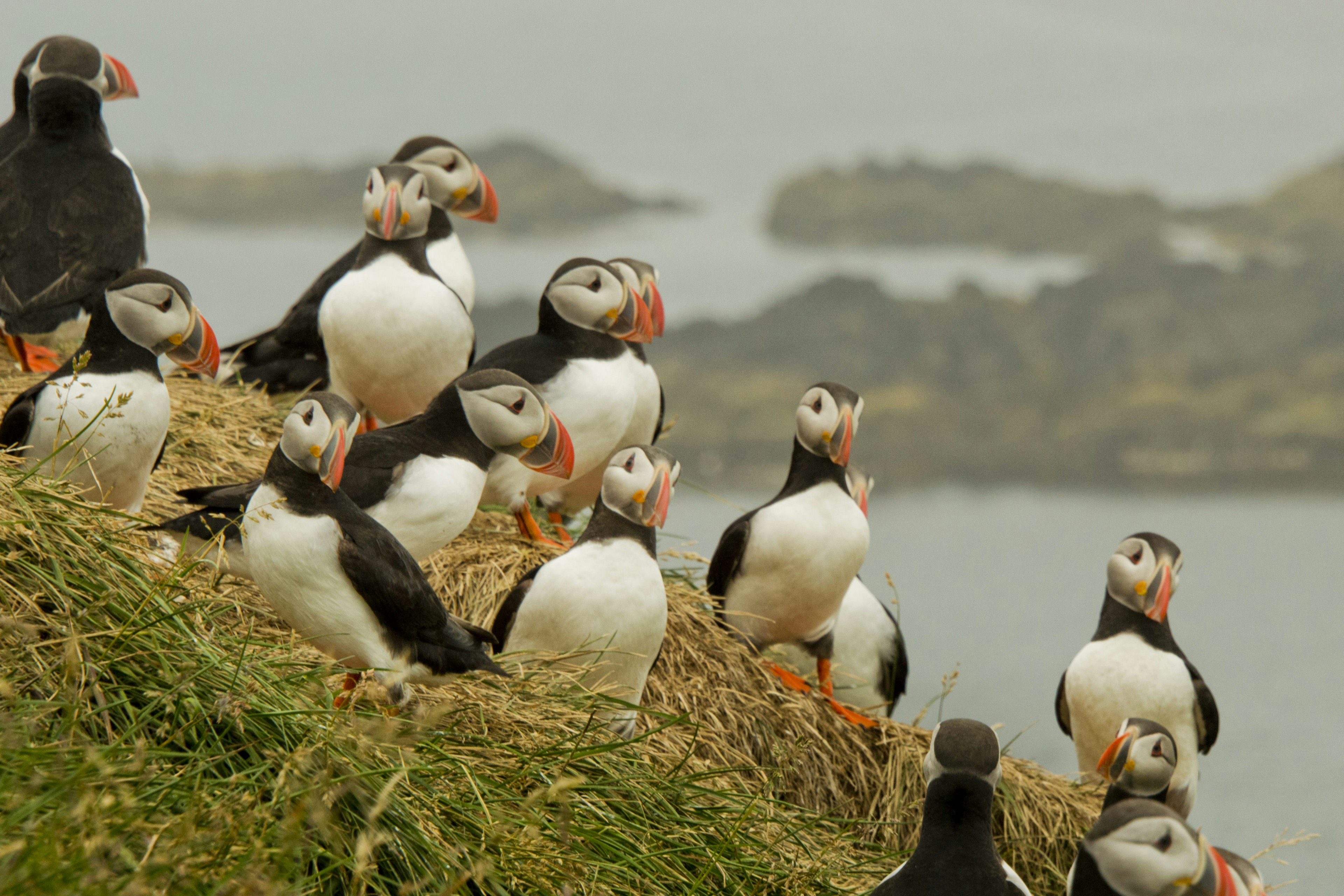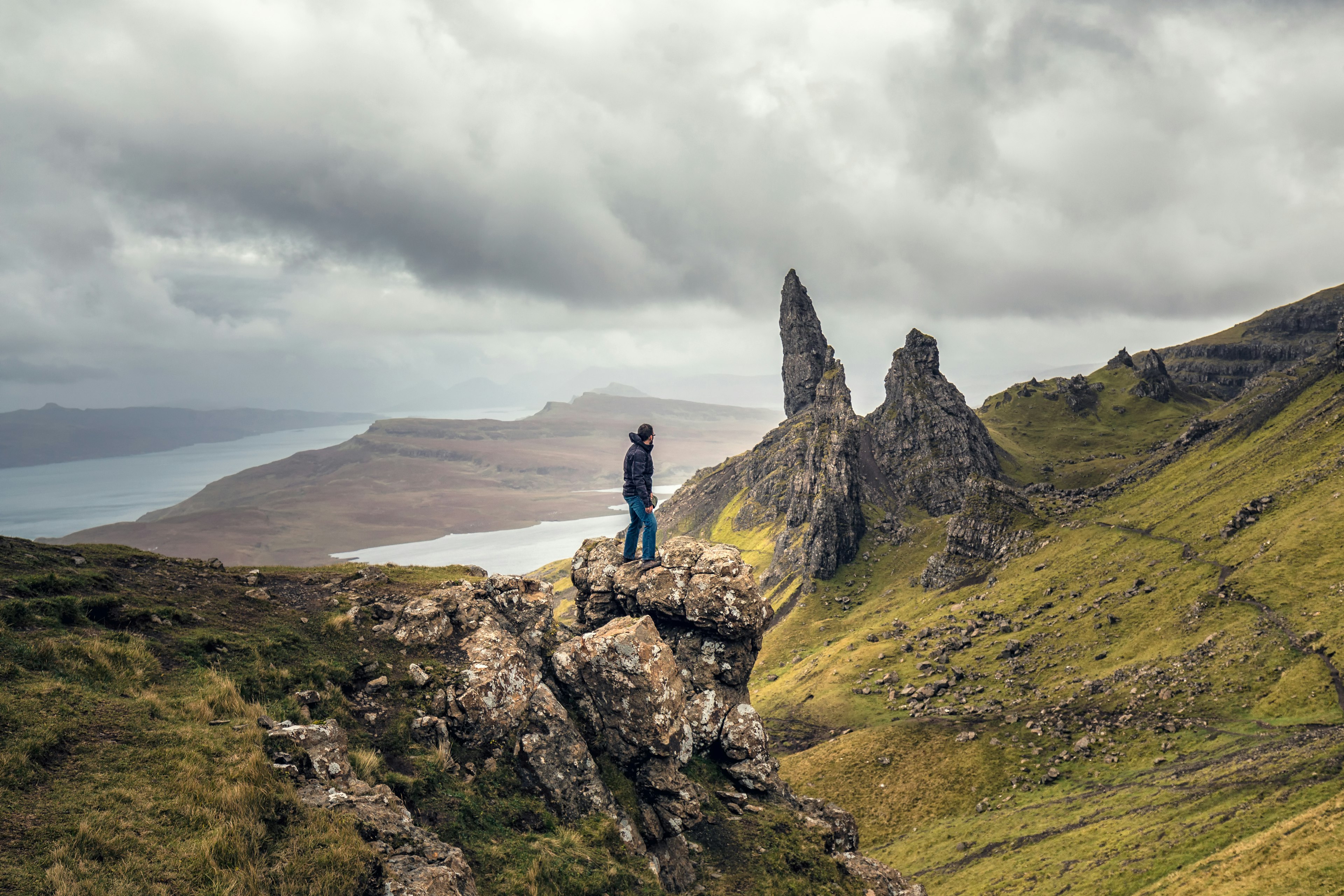
Nov 21, 2024 • 9 min read

Hikes with a view (here, of Loch Lomond), whisky tastings, castles, festivals and much more: these 14 places will show you the best of Scotland. Jaroslav Moravcik/Shutterstock
Some of Scotland’s most appealing places will be instantly familiar to anyone who’s ever gazed at a whisky label or shortbread tin. Those dramatic peaks, lonely glens and lochs, all that tartan and haggis – it really does all exist, in wonderful real life.
From craggy Skye and historic Edinburgh to the rolling rivers of Speyside, Scotland’s big sights are – truly – as glorious as you’d imagine. Yet this proud nation is more than a mere series of postcards. Spend even a short time here, and you’ll find a varied and engrossing place, dotted with prehistoric villages, teeming wildlife and ruined abbeys.
So, where to start? Once you've decided on the best time for your visit, you need to decide on the best places to go while you're there.
Our list of the best destinations in Scotland will help get you started.

Best for castle fanatics
With an impregnable position atop a mighty wooded crag – the plug of an extinct volcano – Stirling’s beautifully preserved Old Town is a treasure trove of historic buildings and cobbled streets winding up to the ramparts of Stirling Castle. This fortress has seen serious action: it was bombarded by the Warwolf, a giant 14th-century English siege engine; came under attack during the 1745 Jacobite rising; and dispatched troops to the battle of Bannockburn, the decisive battle celebrated at the end of Braveheart, just a few miles south.
Today, views that stretch to the Highlands, glorious tapestries and juicy history make this Scotland’s best castle – and a great family attraction.
Planning tip: Since many tourists come on day trips, it’s best to visit in the afternoon. You may have the castle almost to yourself around 4pm.
Best for whisky tasting
Scotland’s national drink is whisky – from the Gaelic uisge beatha, meaning “water of life” – and this fiery spirit has been made here for more than 500 years. More than 50 distilleries are in operation in Speyside, Scotland’s most famous whisky area, famed for fruity, lightly spicy flavors. (Head over to Islay for peatier varieties.)
Ask at the Whisky Museum about the Malt Whisky Trail, a self-guided tour around the local distilleries. If you just have time for one, the Balvenie Distillery is a good bet as it still uses a traditional malting floor. The smell is glorious.
Planning tip: Dufftown lies at the heart of the region and is host to the biannual Spirit of Speyside Whisky Festival.

Best for bird-watching
Close enough to Norway to make Scottish nationality an ambiguous concept, the Shetland Islands are Britain's northernmost outpost. The stirringly bleak setting – recognized as a precious UNESCO Geopark – still feels uniquely Scottish, though, thanks to its deep, naked glens flanked by steep hills, twinkling, sky-blue lochs and, of course, wandering sheep on little-trafficked roads. It's the birdlife, however, that really draws visitors here.
From their first arrival in late spring to the raucous feeding frenzies of high summer, the vast colonies of gannets, guillemots, skua, puffins and kittiwakes at Hermaness, Noss, Sumburgh Head and Fair Isle provide some of Britain's most impressive birdwatching experiences.
Local tip: Shetland is one of the best places in the UK to spot orcas, as well as the northern lights.
Best for a lakeside hike
Despite being less than an hour’s drive from the bustle and sprawl of Glasgow, the bonnie braes (banks) of Loch Lomond – immortalized in the words of one of Scotland’s best-known songs – comprise one of the most scenic parts of the country.
At the heart of Scotland’s first national park, the loch begins as a broad, island-peppered lake in the south, its shores clothed in bluebell-sprinkled woods, before it narrows in the north to a fjord-like trench ringed by mountains.
Detour: The summit of Ben Lomond (974m/3031ft) is a popular climb. Follow the well-maintained path for a 7-mile (11.25km) round-trip on the popular Tourist Route; allow around 5 hours.

Best for year-round entertainment
Scotland's capital is justly famous for its festivals. Yet this is a city of year-round pleasures and many moods. Visit in spring to take in the Old Town silhouetted against a blue sky and a yellow haze of daffodils; or on a chill winter's day to observe fog snagging the spires of the Royal Mile, rain on the cobblestones and a warm glow beckoning from the windows of local pubs. With a world-class modern art gallery, top museums, spooky historic sites and a majestic 12th-century castle, there's plenty to keep you entertained, whatever the season.
Local tip: Start your visit to Edinburgh with a climb up Arthur’s Seat, an extinct volcano that offers up panoramic views over the city.
Best for a country ramble
Many visitors to Scotland race up to Edinburgh and then hightail it to the Highlands, missing the Scottish Borders entirely. That’s their loss. Once fought over by war chiefs and cattle thieves, the Borders region is rich in history and packed with good cycling and hiking routes.
There are grand country manors (Traquair House brews Jacobite Ale and has a concealed room that once hid Catholic priests), as well as a series of gorgeous ruined abbeys (Gothic Melrose Abbey is the best), plus birds and sea cliffs at St Abb’s Head. More active types can fish for salmon or thunder down the mountain bike trails at Glentress and Innerleithen.

Best for a scenic road trip
Breathtaking views abound in the Highlands. And the far north is where things become truly awe-inspiring. This is the best place in Scotland to explore by car (the truly fit can also cycle it) – with the reward being some of the finest roadside scenery in Europe.
The North Coast 500 starts and ends in the lovely city of Inverness, looping past the lochs, sand dunes and golf courses of the east coast before taking in the remote cliffs and beaches of Cape Wrath, the rugged peaks of Assynt, and Torridon’s desolate beauty. These sights – as well as the famously warm Highland hospitality found in the region’s classic rural pubs and old crofting villages – make this an unforgettable week-long tour.
Best place for long-distance hiking
The best way to absorb Scotland’s landscapes is to walk across them. Expect peaks that tower over lochs and sea cliffs that gaze over the wind-whipped sea, yes – but also short woodland trails and charming strolls through valleys dusted with purple heather. At the top of many hikers’ wish lists is the 96-mile (155km) West Highland Way from Milngavie (near Glasgow) to Fort William, a weeklong walk through some of the country’s finest scenery that finishes in the shadow of its highest peak, Ben Nevis.
If you don’t have the time or energy for a long-distance trek, it’s possible to do just a day’s hike along part of the trail. For example, you could walk the section from Rowardennan to Inversnaid, returning to your starting point using the Loch Lomond waterbus. Whichever section you take on, pack waterproof layers and midge repellent. Rail lovers should note that sleeper trains run south from Fort William all the way to London, making for an easy exit after a walk.
Detour: The 1345m (4413ft) summit of Ben Nevis is within reach of anyone who's reasonably fit. Treat the peak with respect, and your reward (weather permitting) will be magnificent views that can stretch as far as Northern Ireland.

Best for photographers
In a country famous for over-the-top scenery, the Isle of Skye is an apex. From the craggy peaks of the Cuillins and the bizarre pinnacles of the Old Man of Storr and the Quiraing to the spectacular sea cliffs of Neist Point, a photo opportunity awaits at almost every turn.
Skye is also one of the best places in Scotland to see golden eagles. And – if you can tear your eyes from the natural world – you’ll find convivial pubs and top seafood restaurants, too. Of course, all this tourist appeal makes Skye one of Scotland’s most popular destinations. Yet the crowds tend to stick to Portree, Dunvegan and Trotternish – and it’s almost always possible to find peace and quiet in the island’s further-flung corners.
Planning tip: Come prepared for changeable weather. When it’s fine, it’s very fine indeed. But all too often, it isn’t.
Best for enjoying nature’s bounty
In Perthshire, the heart of Scotland, picturesque towns bloom with flowers, distilleries emit tempting malty odors, and sheep graze in impossibly green meadows. There’s a feeling of the bounty of nature here that no other place in Scotland can replicate.
Blue-gray lochs shimmer, reflecting the changing moods of the weather; centuries-old trees tower amid riverside forests; majestic glens scythe their way into remote wildernesses; and salmon leap upriver to the place of their birth. Savor it all.

Best for live music and pub culture
Scotland’s biggest city lacks Edinburgh’s dramatic setting, it’s true – but its varied activities, warmth and energy leave every visitor impressed. Edgy and contemporary, this is a great city for browsing art galleries and museums and discovering the works of local design hero Charles Rennie Mackintosh.
Glasgow’s infectious vitality is best sampled via its lively pubs and clubs, which host one of the world’s great live music scenes.
Local tip: Check out upcoming (mostly alt-rock) acts at legendary former ballroom Barrowland (crowned the UK’s best music venue by Time Out in 2023). Or try the Sub Club for house and techno, the Clutha Bar for roots and rock, or Nice ‘n‘ Sleazy, a classic indie dive.
Best for golfers
Scotland invented the game of golf, and the city of St Andrews is still revered as its spiritual home by amateurs and champions alike. Links courses are the classic experience here – bumpy coastal affairs where the rough is heather and machair (coastal grass), and the main enemy is the wind off the sea, which can make a disaster of a promising round in an instant.
The historic Fife university town of St Andrews is the game of golf’s unofficial headquarters, and an irresistible destination for anyone who loves the sport. And if you’re not so keen...well, the city has impressive medieval ruins, stately university buildings, idyllic white sands and excellent guesthouses and restaurants.

Best for ancient history
Visitors to ancient sites often find it difficult to imagine them as they existed millennia ago, or to build a connection with the people that built them. Yet Scotland’s superb prehistoric remains have an immediate impact. Few places offer a better glimpse of everyday Stone Age life than Skara Brae in Orkney, with its carefully constructed fireplaces, beds, cupboards and water cisterns.
This Neolithic village – which, dating back 5000 years, is older than Stonehenge or the Pyramids of Giza – lay buried in coastal sand dunes for centuries. Even today, it can feel as though the inhabitants have just slipped out to go fishing and could return at any moment.
Best for clan history
Scotland’s most famous glen combines two essential qualities of the Highlands: dramatic scenery and a deep sense of history. The peace and beauty of this valley today belie the fact that Glen Coe was the scene of a ruthless 17th-century massacre, when the local MacDonalds were murdered by warriors of the Campbell clan.
Some of the glen’s finest walks – to the Lost Valley, for example – follow the routes taken by fleeing clanspeople, many of whom perished in the snow.
Planning tip: Start at the Glencoe Visitor Centre for more information on this beautiful place and its tragic history.


Nov 21, 2024 • 9 min read






Nov 6, 2024 • 7 min read

Oct 30, 2024 • 9 min read
